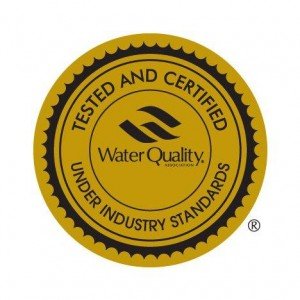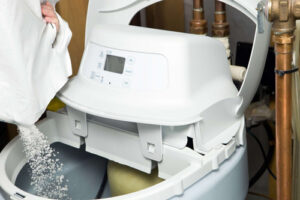It is truly amazing how cavalier we are about our water quality. We assume (hope really) that something so basic as our water—so vital and necessary—will actually be healthy for us (or at least not make us sick). Unless we are buying a new home almost none of us ever has our well tested (and that’s frequently required by lenders to protect their investment—the house and fixtures—not you). Typically, if no lender is involved on a home sale there is little control over your water quality.

More often than not, if the water is cold, doesn’t smell or have junk floating in it, we gulp it down in blissful ignorance. Of all the stuff that could be in your water I named above, only chlorine would be noticed by you (because it smells) and most folks on municipal water “get used to it”. I’ve encountered the overwhelming stench of sulfur (rotten egg smell) in some homes’ water, but the residents still drink it because they “got used to it”. If you have to “get used to it” you ought not to drink it. “Getting used to it” is not only unnecessary, it could be unhealthy.

Back to well testing. The EPA recommends that you test your well for bacteria at least once annually. If you have young children, there are pediatric groups that recommend twice annual testing. I’ve had clients tell me, “well, when we bought the house it failed, but we put chlorine in the well and it passed, so I’m sure it’s fine now.” First, the well got bacteria in it once, so why would you assume it won’t again? Second, a “passing” bacteria test (the absence of bacteria in the sample) is a “snapshot”—on the day and time that sample was taken the well had no bacteria (or not enough to make it fail). From that point forward you really have no idea if the well is bacteria free or not.
Picture this: I come over with a shovel and dig a hole in your yard down to where I hit water (let’s assume it isn’t that deep since I’m not as young as I used to be). I put a metal lining in the hole with a screen on the end to keep the big chunks of dirt out (most people don’t like to chew their water), then I put a lid on it with a small hole in the middle and hand you a long straw. Are you going to take a sip? I doubt it. Now, assume I have some guys with a big drill on a truck dig a really deep hole, put a metal lining in the whole (again, at least to keep the big dirt chunks out), put a lid on it and hand you a hose (we put a pump on it since it’s so deep this time). Going to take a sip? You sure will! That’s exactly how you get your well water now.
Now picture this: You have municipal water. I drop a strand of spaghetti in the water at the treatment plant. You turn on your tap. The spaghetti winds its way through pipes big and small, old and new, past tree routes, leaks and bio-film (really interesting stuff that builds up in water lines—fortunately the spaghetti has soaked up a good bit of chlorine!), then out it drips from your tap right into your hand. Go ahead, pop it in your mouth! No? Why not? You don’t hesitate to drink the water when it spills into your glass.




